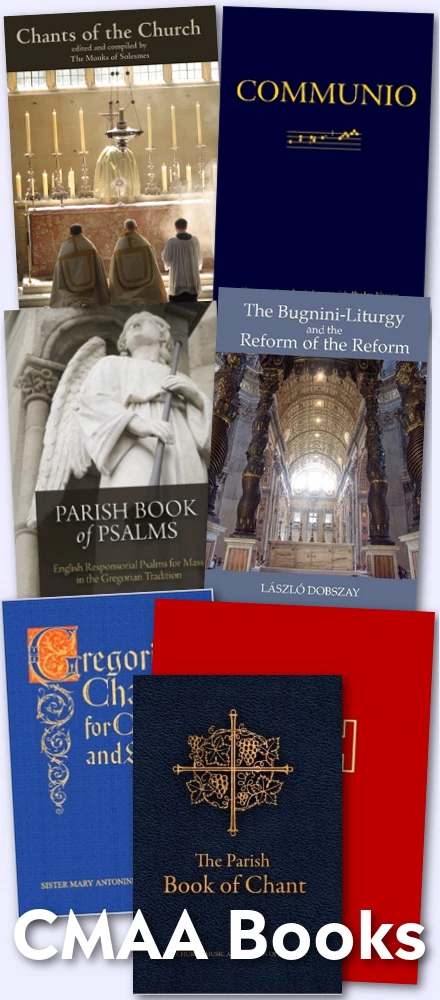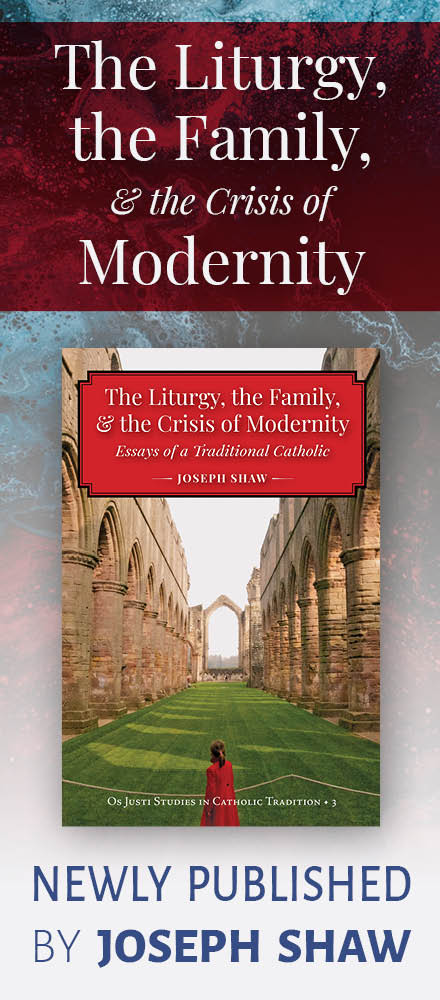I was recently pointed to the following link which caught my interest: The Indian Mass (by which is not meant East Indian, but Native American).When thinking upon the variations found in the liturgical West, we are of course accustomed to thinking of the varying rites distinct from the Roman, and of course the mediaeval uses of the Roman rite -- particularly those found in mediaeval England, such as Hereford, York and Salisbury.
We perhaps not so accustomed to think upon the liturgical variations/indults which may have been permitted in the context of mission territories in the Far East or new world, or even Eastern Europe. It's for this reason I thought it might be of interest to share this site which states as its purpose to provide "resources for the study of Catholic liturgies of the Northeastern Indian Missions."
Now, it seems worth noting that the source materials for the liturgies that the author quotes seem quite rare, so it is difficult to confirm the information, that we might ourselves dig into the history and summation presented. If any of our readership has any further insight to offer either in concert or in contradiction with what the site presents, I think we would all be most obliged.
That caveat aside, we certainly know that there have historically been such precedents as regards the ancient Roman liturgy in its texts and rubrics; indults to the norm.
Looking now to the website itself, it presents what it calls general characteristics of these variants upon the Roman rite:
"In the Indian Missions of Northeastern America and Eastern Canada—predominantly those areas first explored and missionized by the French—the Mass had developed along its own distinct lines beginning in the late 1600s.
"The first major difference between Mass at these missions and elsewhere was that the missions had a very special and rare permission to use the vernacular instead of Latin for the parts sung by the schola: the ordinaries and the propers. The actual vernacular used, of course, varied by whatever tribe happened to predominate at the mission: at Kahnawake it was Mohawk, at Lorette it was Huron. Less commonly, multiple languages were used, such as at the Lake of Two Mountains (Kanesatake/Oka), where both Mohawk and Algonquin were used liturgically, sometimes even within the same Mass.
"The second major difference was in the system of propers. The missions dramatically simplified the complex Latin propers by reducing their number and by simply substituting native-language hymns. The Introit was one of the only propers that was always retained, but typically, the Indian Mass used a very small set of them (anywhere from 2-6) which were repeated throughout the season. The rest of the propers were typically replaced by hymns; so there would be a hymn between the Epistle and Gospel replacing the Gradual and the Alleluia/Tract, a hymn for Offertory, and a hymn for Communion. Some of the liturgies show true Graduals and Alleluias, but this was not the case generally. Most, however, do show true Sequences in the few Masses that call for them."
They note however that the Requiem Mass retained all of the Latin propers. It is worth noting that a break down of these general characteristics can be found on the site itself in a handy diagram format.
Perhaps most interesting, the author of the site gives the texts of the Ordo Missae of the following liturgical variants from the Native American missions:Akwesasne (Mohawk)
Source: Kaiatonsera Teieriwakwatha (1890) for the mission of St. Regis or Akwesasne
Kanesatake (Mohawk)
Source: Tsiatak Nihonon8entsiake (1865) for the mission of the Lake of the Two Mountains or Kahnesatake, which used both Mohawk and Algonquin in the liturgy.
Oka (Algonquin)
Source: Niina Aiamie Masinaigan (1898) for the Algonquins of Temiscaming, D'Abitibi, Grand Lac, Lake Timagaming, Metadjiwang and Weymontaching
Lorette (Huron)
Source: Manuscript "Recueil de Chants Hurons", written by Paul Tsa8enhohi for the mission of Lorette
Old Town (Penobscot)
Source: Vetromile's Indian Good Book (1858)
The site lists two others which they don't have texts for:
Listiguj (Micmac)
Saguenay (Montagnais)
Again, comments and discussion would be most welcome.
Tuesday, September 25, 2007
The Roman liturgy in the Native American Missions?
Shawn TribeMore recent articles:
A Medieval Hymn for EastertideGregory DiPippo
Many medieval breviaries, including those of the Sarum Use, the Cistercians, Carmelites and Premonstratensians, have a hymn for the Easter season which is not found in the Roman Breviary, Chorus novae Jerusalem by St Fulbert, bishop of Chartres, who died in 1029. The original version of the Latin text, and the English translation of John Maso...
Two Upcoming Events from the Durandus InstituteGregory DiPippo
Our friend James Griffin of The Durandus Institute for Sacred Liturgy and Music wishes all our readers a joyous Easter season, by presenting two opportunities, at least for those in southeast Pennsylvania, to celebrate.First, this coming Sunday at 5pm, there will be a solemn Vespers in the traditional Latin rite for the Second Sunday after Easter a...
Letter to a Maximalist Music Director in a Minimalist WorldPeter Kwasniewski
Auguste Danse, Study of Three Singers (detail)The following is based on a real letter.Dear Friend,I’m sorry to hear that you’re experiencing some “ups and downs” with regard to the liturgy there, though it’s hardly surprising in a way. Your diocese is not well known for liturgical propriety or taste, and, beyond that, priests mostly have control ov...
The Tomb of St Peter Martyr in Milan’s Portinari ChapelGregory DiPippo
Here are some great photos from our Ambrosian correspondent Nicola de’ Grandi of the Portinari Chapel at the Basilica of St Eustorgio in Milan. They were taken during a special night-time opening made possible by a new lighting system; as one might well imagine, the Italians are extraordinarily good at this sort of thing, and more and more museum...
Recommended Art History and Artistic Practice Text Books for Homeschoolers... and Everyone Else Too!David Clayton
I want to recommend the Catholic Heritage Currricula texts books to all who are looking for materials for courses in art history, art theory and artistic practice at the middle-school or high-school level. These books present a curriculum that combines art history, art theory, and a theory of culture in a Catholic way. Furthermore, they provide the...
Launching “Theological Classics”: Newman on the Virgin Mary, St Vincent on Novelty & Heresy, Guardini on Sacred SignsPeter Kwasniewski
At a time of turmoil, nothing could be better or more important than rooting ourselves more deeply in the Catholic tradition. One of my favorite quotations is by St. Prosper of Aquitaine (390-455), writing in his own age of chaos: “Even if the wounds of this shattered world enmesh you, and the sea in turmoil bears you along in but one surviving shi...
Low Sunday 2025Gregory DiPippo
With his inquisitive right hand, Thomas searched out Thy life-bestowing side, O Christ God; for when Thou didst enter while the doors were shut, he cried out to Thee with the rest of the Apostles: Thou art my Lord and my God. (The Kontakion of St Thomas Sunday at Matins in the Byzantine Rite.)Who preserved the disciple’s hand unburnt when he drew n...
The Easter Sequence Laudes SalvatoriGregory DiPippo
The traditional sequence for Easter, Victimae Paschali laudes, is rightly regarded as one of the greatest gems of medieval liturgical poetry, such that it was even accepted by the Missal of the Roman Curia, which had only four sequences, a tradition which passed into the Missal of St Pius V. But of course, sequences as a liturgical genre were extre...
The Paschal Stichera of the Byzantine Rite in EnglishGregory DiPippo
One of the most magnificent features of the Byzantine Rite is a group of hymns known as the Paschal stichera. These are sung at Orthros and Vespers each day of Bright Week, as the Easter octave is called, and thenceforth on the Sundays of the Easter season, and on the Leave-taking of Easter, the day before the Ascension. As with all things Byzantin...
Medieval Vespers of EasterGregory DiPippo
In the Breviary of St Pius V, Vespers of Easter Sunday and the days within the octave present only one peculiarity, namely, that the Chapter and Hymn are replaced by the words of Psalm 117, “Haec dies quam fecit Dominus; exsultemus et laetemur in ea. – This is the day that the Lord has made; let us be glad and rejoice therein.” In the Office, this...




















